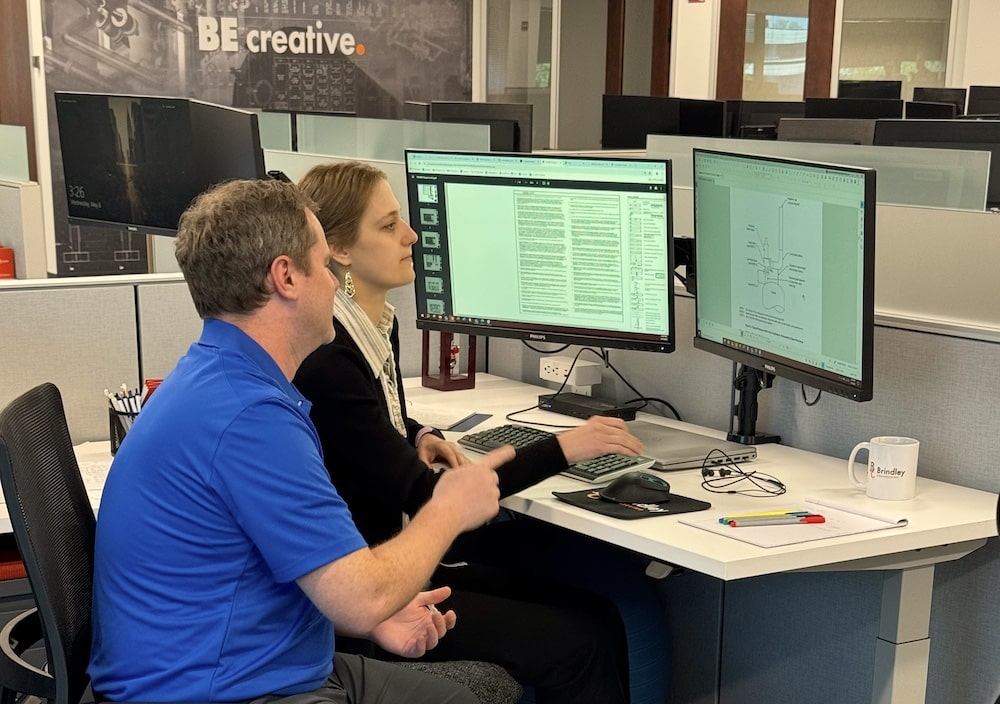By Gavin Palmer – Brindley Engineering, Process Department Manager
The refining, chemical and petrochemical industries predominantly use a process called Front End Loading (FEL) or Front End Engineering and Design (FEED) to evaluate, select and execute engineering projects. Brindley Engineering excels in supporting our clients during these efforts, from FEL 1 through FEL 3 and into detailed engineering and project construction or start-up. As each stage progresses, we get a chance to “sharpen our pencils,” getting closer and closer to the optimum solution for our clients as we move through these project phases.
In this blog post, we focus on the FEL process and an example of its application. Let us start with the description of each FEL stage.
FEL Process Overview
- FEL 1 – Often heavily client driven or led, this phase uses the driving business case for the project, evaluates its potential impact, and develops primarily process deliverables such as redlined PFDs and P&IDs to a degree of completion commensurate with a +/-50% TIC estimate. The client then evaluates the estimate, reviews the FEL 1 package with the project stakeholders and decides whether to proceed to FEL 2.
- FEL 2 – Engineering deliverables are developed further, and additional engineering disciplines are engaged to better define the project. Alternatives solutions are also evaluated in this stage to ensure that the scope being considered offers the best available solution. At this stage, the more detailed deliverables typically allow development of a +/-30% TIC estimate. We will also evaluate the need to accelerate the development of deliverables associated with long-lead items of equipment, so an order can be placed at the end of FEL 2 should the stakeholders decide to move forward with FEL 3 and Detailed Design document.
- FEL 3 – In this phase, all engineering disciplines move forward with the development of their deliverables in support of a final +/-10% TIC estimate that will form the basis for authorization of project funding. Specifically, process engineering develops the Design Basis document, PFDs, P&IDs, and Line List deliverables to IFD (Issued for Design) status. Any additional equipment may be developed sufficiently for orders to be placed early in the Detailed Design stage, as well as any long-lead instruments and electrical equipment.
FEL effort overview for a Chicago area specialty chemical facility
Brindley Engineering recently assisted an FEL effort for a Chicago area specialty chemical facility investigate the feasibility of rebuilding a product storage tank in one of their on-site tank farms. Brindley Engineering completed FEL 1 and FEL 2 phases of the project utilizing prior experience at the facility, particularly with previous API-650 tank replacements within the same tank farm.
Our FEL 1 process effort focused on the interaction of the replacement tank with its neighboring tanks in the tank farm, namely the nature of the products stored, tie-points to piping, pumps, and other tanks, and an NFPA siting study to determine the correct tank spacing per code. A Process Design Basis document was created, as well as a high-level Demolition Scope-of-Work to facilitate early removal of the existing tank. The PFD and P&IDs were redlined to document proposed scope, and a 2-dimensional piping line study was completed to assist in developing an estimate. A laser scan of the area was also performed during this phase anticipating the need for future 3D modeling. At this stage of the project, tank construction costs were factored from recent, similar projects to assist with the development of a +/-50% TIC estimate.
Once approved to proceed to FEL 2, Brindley Engineering engaged tank vendors to provide budgetary pricing specific to the construction of this tank, in addition to obtaining quotations on other equipment (tank heating bayonets, agitator, steam trapping equipment and tank venting devices). A 3D model was started based on the tank location and spacing determined during FEL 2, and major piping runs and tie-points were modeled to generate accurate bills of material for cost estimating. A preliminary civil/structural package was developed, including a tank foundation design and concrete/steel bills of material for pipe supports and ancillary structures. All other deliverables from FEL 2 were updated with the latest project information to assist in the development of a +/-30% TIC estimate.


0 Comments